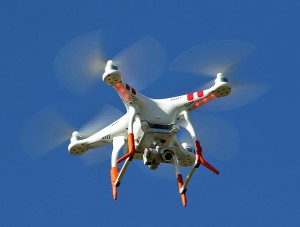The FAA is still in its rule-making process for drones (or as they call them, UAS — unmanned aircraft systems), but they have announced that all drone operators must register themselves and their aircraft online. There will be a $3 fee (waived for early-registrants until 1/20/2016) and the registration lasts three years.

Some drone enthusiasts and some libertarians are up in arms. “It’s just a new technology that they fear they can’t control!” “Our rights are being curtailed for no good reason!” “That database will be used against us, just wait and see!”
I have a few thoughts.
First, I have more than a smidgeon of sympathy for these views. We should always pause whenever the government decides it needs to intervene in some process. And to be frank, the barriers set by the FAA to traditional aviation are extremely high. So high that general aviation has never entered the mainstream of American culture, and given the shrinking pilot population, probably never will. The price to get in the air is so high in terms of training that few ever get there. As a consequence, the price of aircraft remains high, the technological improvement of aircraft remains slow, rinse, repeat.
In fact, I have often wondered what the world might be like if the FAA had been more lax about crashes and regulation. Perhaps we’d have skies filled with swarms of morning commuters, with frequent crashes which we accept as a fact of life. Or perhaps those large volumes of users would spur investment in automation and safety technologies that would mitigate the danger — at least after an initial period of carnage.
I think I would be upset if the rules were like those for general aviation. But in fact registration is pretty modest. I suspect that later, there will be some training and perhaps a knowledge test, which seems quite reasonable. As a user of the National Airspace System (both as a pilot and a passenger) I certainly appreciate not ramming into solid objects while airborne. Registration, of course, doesn’t magically separate aircraft, but it provides a means for accountability. Over time, I suspect rules will be developed to set expectations on behavior, so that all NAS users know what to expect in normal operations. Call it a necessary evil, or, to use a more traditional term, “governance.”
But there is one interesting angle here: the class of UAS being regulated (those weighing between 0.55 lb and 55 lb) have existed for a long time in the radio-controlled model community. What has changed to make drones “special,” requiring regulation now?
I think it is not the aircraft themselves, but the community of users. Traditional radio-controlled models were expensive to buy, took significant time to build, and were difficult to fly. The result was an enthusiast community, which by either natural demeanor or soft-enforced community norms, seemed able to keep their model airplanes out of airspace used by manned aircraft.
Drones came along and that changed quickly. The drones are cheap and easy to fly, and more and different people are flying them. And they’re alone, not in clubs. The result has been one serious airspace incursion after another.
A lot of people seem to think that because drones aren’t fundamentally different technology from traditional RC hobby activity, that no new rule is warranted. I don’t see the logic. That’s not smart. It’s not about the machines, it’s about the situation.
Anyway, I think the future for drone ops is actually quite bright. There is precedent for a vibrant hobby along with reasonable controls. Amateur radio is one example. Yes, taking a multiple-choice test is a barrier to many, but perhaps a barrier worth having. Also, the amateur radio community seems to have developed its own immune system against violators of the culture and rules, which works out nicely, since the FCC (like the FAA) has limited capacity for enforcement. And it’s probably not coincidental that the FCC has never tried to build up a large enforcement capability.
Which brings me to my final point, which is that if the drone community is smart they will create a culture of their own and they will embrace and even suggest rules that allow their hobby to fruitfully coexist with traditional NAS users. The Academy of Model Aeronautics, a club of RC modelers, could perhaps grow to encompass the coming army of amateur drone users.
Excellent post. I agree with your analysis of why all of a sudden we are seeing a drive to have regulation of remotely piloted aircraft when no one saw the need when it was just RC model planes flown by enthusiasts. I think that cheap, readily available remotely piloted aircraft are more like cars; there is a need to invoke rules to prevent injury or calamity. But I guess you could say that for guns, too.